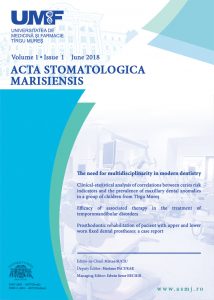Introduction. White spot lesions are early signs of demineralization, which may or may not lead to the development of caries. An inactive white spot lesion might act as an arrested dental caries and affect the esthetic appearance by displaying a milky white color. These lesions need a non-invasive or a minimally invasive treatment. One of the materials taken into consideration in treating these lesions is ICON, a biomimetic material that infiltrates the white spots and can reestablish the esthetic function. The aim of the current study was to evaluate the esthetic efficacy of a minimally invasive technique and a relatively new product on the dental market, ICON, in the treatment of different non-cavitated carious lesions. Case presentation. A 14-year-old patient presented to the dental clinic with asymptomatic, non-cavitating lesions on the cervical aspect of all permanent teeth. The lesions were diagnosed as incipient caries on the buccal, occlusal, and palatal surfaces of the teeth, and the proposed treatment to arrest their progression and improve the esthetic appearance was the use of the ICON infiltration technique. Conclusion. The ICON resin infiltration treatment increased esthetics, visibly diminishing the appearance of non-cavitating carious lesions.
Marcieana Oniga 1, Irina Lupșe 1, Alexandrina Muntean 1, Cristina Ioana Bica 2
1 University of Medicine and Pharmacy Iuliu Hațieganu, Cluj-Napoca, Cluj, Romania.
2 George Emil Palade University of Medicine, Pharmacy, Science, and Technology of Târgu-Mureș, Romania
1 University of Medicine and Pharmacy Iuliu Hațieganu, Cluj-Napoca, Cluj, Romania.
2 George Emil Palade University of Medicine, Pharmacy, Science, and Technology of Târgu-Mureș, Romania

Comments are closed.